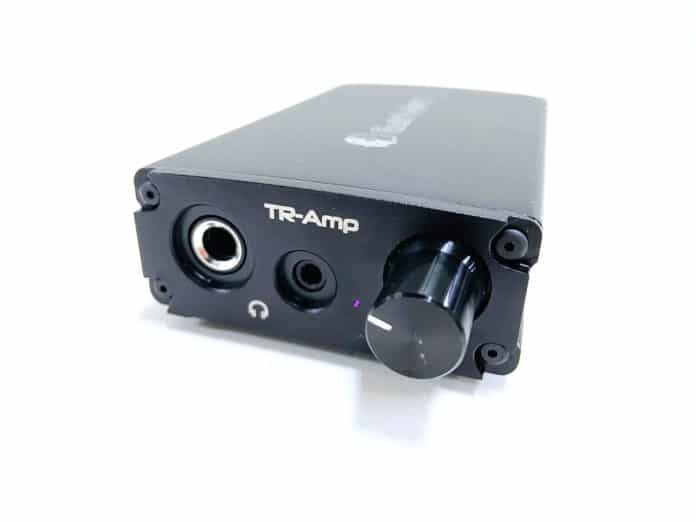A little company called EarMen produces affordable DAC amp combos that, in some ways, can compete with higher priced models from major brands. EarMen’s TR-Amp, is a prime example. What can you expect in terms of design and performance? And with respect to sound quality, can it compete with the heavy hitters? Let’s find out in his EarMen TR-Amp Review.
EarMen TR-Amp Review
IN the BOX
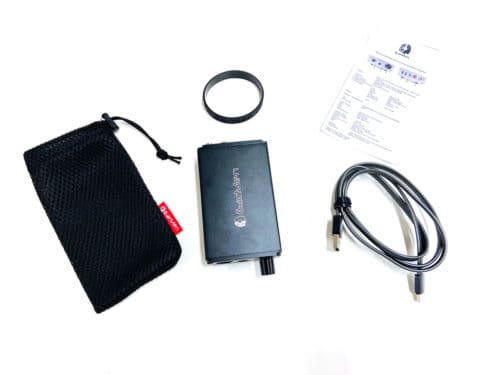
DESIGN
Build and Appearance
The TR-Amp is a solid thing. And in terms of build, it looks and feels like some of iFi’s DAC models. It falls somewhere in the middle between the size of the iFi iDSD Nano and the Black label Micro. For me, it’s a little too bulky for on-the-go use, and I think it’s most suitable as a portable desktop option.
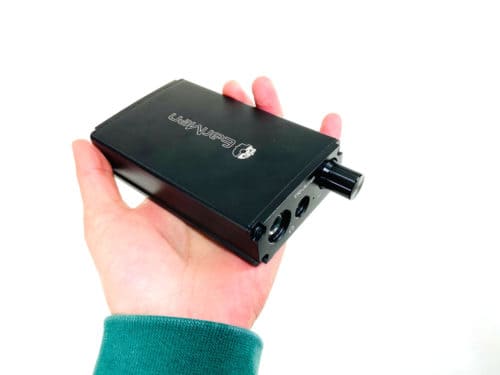

Power
One of the best aspects of the TR-Amp is its ability to power high impedance headphones. I hooked it up to a 250 Ohm DT770, and it seemed to handle it well. You might be pushing it at 300 ohms. But still, for a relatively small amp, it provides an impressive amount of juice.
Inputs, Outputs and Switches
Besides the ¼ inch and 3.5mm outputs (no balanced), you’ll also find RCA line outs at the back of the module. There are 2 USB-C connections – one for the digital transfer and the other for charging.
There’s also a PRE line out switch if you want to bypass the integrated amp and use an external amp source.
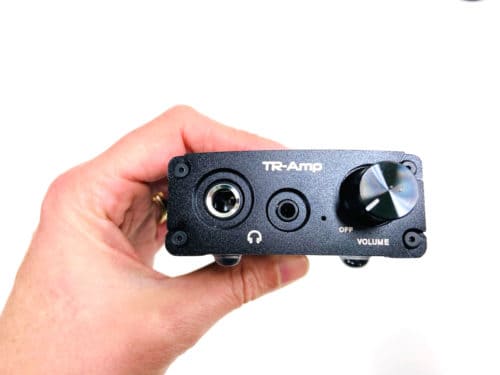
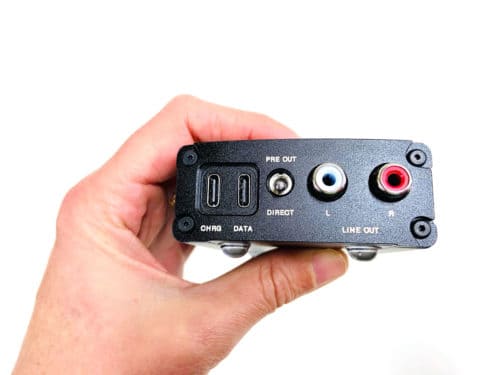
Audio Formats
The TR-Amp plays up to 32Bit/384kHz and supports DSD 128 Native, DXD and PCM. And if you stream Tidal, you’ll be pleased to know that the TR-Amp also unfolds MQA.
DAC Chip
ESS Sabre 9083
LED Indicator
The LED indicator at the front of the amp will turn different colors depending on the format you’re playing. For example, the indicator will light up magenta if you’re playing MQA and cyan if you’re playing DSD.
Battery Life
You’ll get up to 10 hours of playtime, probably depending on the volume level. This about average for a portable battery powered amp. But I only listened to the TR-Amp for a couple of hours, so I can’t verify this claim.
SOUND
It’s funny because I got different impressions depending on which test headphone I used. Paired with the Campfire Andromeda, the sound felt warmer with less definition that I’m used to hearing from the Andromeda. It just seemed to take the soul out of the sound signature. It was almost like a distortion. So, I figured, maybe a super sensitive IEM wasn’t the right candidate for the TR-Amp.
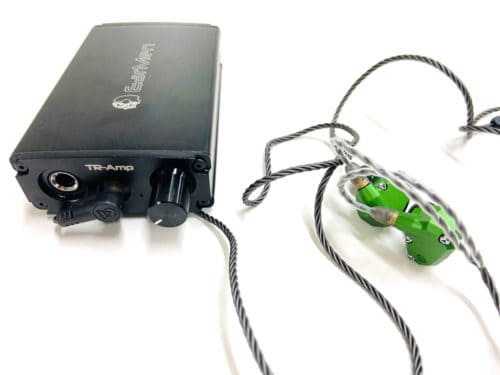
But hooked up to a higher impedance set of reference cans (DT 770 80 Ohms), the impression was different. Rather than warming up the sound or softening any edges, there was a firmness or even heavy handedness to the sound. Almost like a compression.
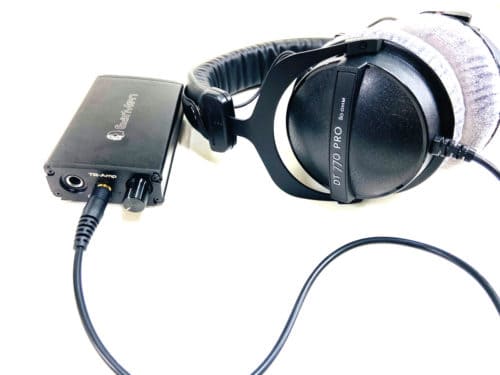
For the sake of comparison, I AB’d it with the iFi xDSD, since that DAC falls on the more neutral end of the spectrum. The difference was marginal, but it felt like the iDXD handled instruments with a gentler touch. Switching to the TR-Amp, the sound became harder and less nuanced. Again, the TR-Amp had a slightly compressed feel. And instruments that felt airy on the iDXD, for example, lost that characteristic when hooked up to the TR-Amp. But again, the differences are less than vast. And in terms of performance, you can’t say that the TR-Amp falls far short. And if you already own a highly charismatic headphone, less personality in your DAC might not be a bad thing. That being said, the sense of compression is hard to ignore. So, if you’re looking for a highly detailed and precise sounding DAC, the TR-Amp may not be the best choice.
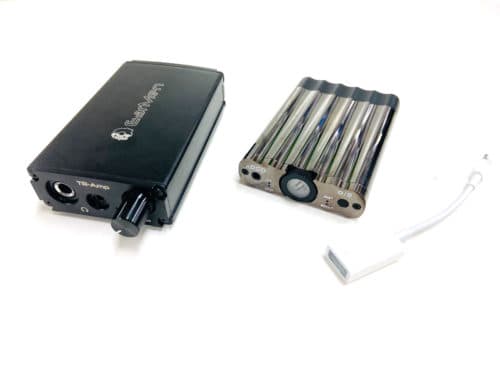
PROS and CONS
Pros: Can power high-impedance headphones; decodes MQA.
Cons: Sound performance could be better for the price; not suitable for highly sensitive IEMs; no balanced output.
SUMMARY
If you’re using IEMs or headphones with low impedance, there’s better quality sound out there under $250, especially if you’d like to go with a balanced connection in the future. At the risk of overdoing the iFi comparisons, iFi’s newly released hip-dac ($150) is a good example. It may not provide as much power, but it has a balanced output, the sound is more transparent/less compressed, and it also unfolds MQA. However, if your main priority is power (in addition to MQA support) then at $249, the EarMen TR-Amp is a good option for the price.
You can find the EarMen TR-Amp for the best price here:
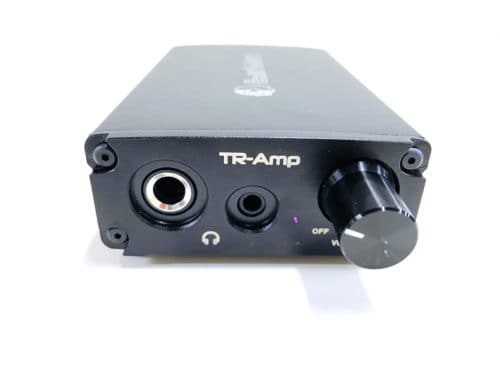
MajorHifi may receive commission through online offers.
Compare the ranking of various headphones, earbuds and in-ear monitors using our tools.
Discuss this, and much more, over on our forum.
---MAJORHIFI may receive commissions from retail offers.


